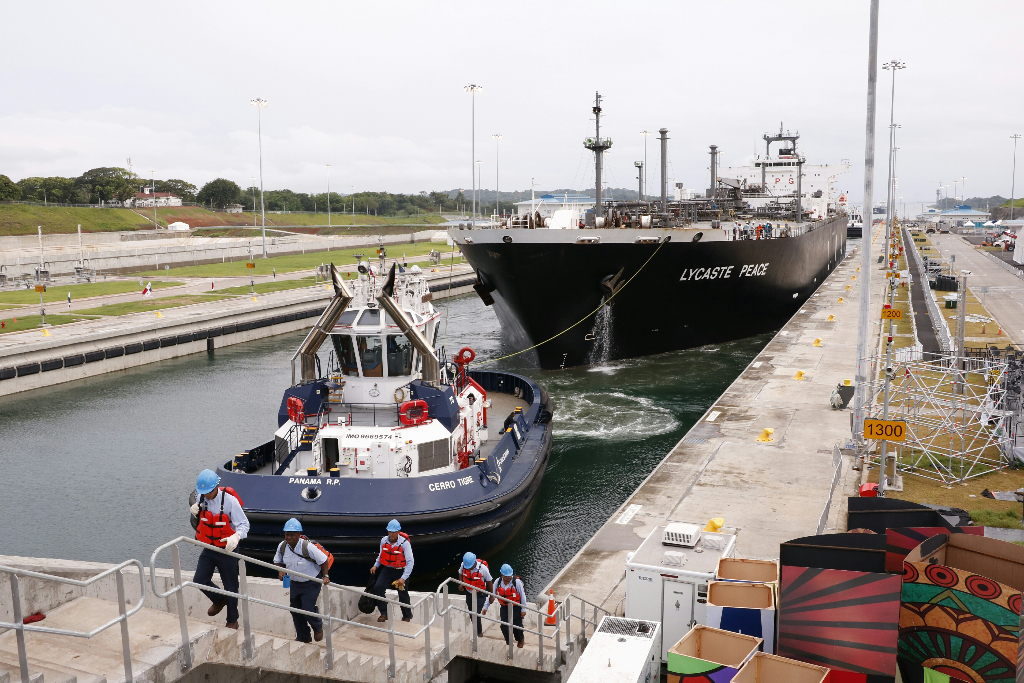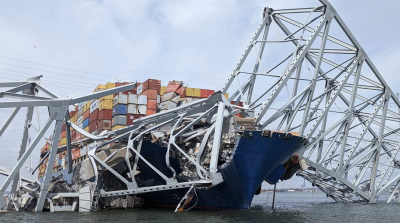(Bloomberg) — Natural gas exports from the U.S. Gulf Coast will reach buyers in Asia and South America faster and at lower costs thanks to an expanded Panama Canal that could see 550 tankers a year by 2021.
As of Sunday, the canal linking the Pacific and Atlantic oceans was open to the size of vessel typically used to carry liquefied natural gas after a $5.3 billion expansion. The shortcut will shrink travel times for ships carrying gas from U.S. shale fields and encourage utilities and traders who have reserved liquefaction capacity to actually use those plants.
Since the U.S. became an exporter of the power plant fuel for the first time in February, 15 tankers have left Cheniere Energy Inc.’s Sabine Pass terminal in Louisiana as of June. U.S. export capacity is expected to expand to 9.2 billion cubic feet a day and the country will become the world’s third-largest LNG producer after Australia and Qatar by 2020, the Energy Information Administration said in a report Thursday.
“The Panama Canal expansion will mean Asia can meet its demand peaks with U.S. gas with lower prices,” Alex Tertzakian, an analyst with Energy Aspects Ltd. in London, said in an e-mail Friday. “However, when the market is looking more over-supplied, U.S. volumes will still be challenged to sell into” Asia.
The expanded canal will give 90 percent of the world’s fleet of LNG tankers access to the shortcut, according to Victoria Zaretskaya, a Washington-based analyst with the EIA. Large tankers bound for Asia that use the canal may save as much as $3.2 million per round trip compared with travel through the Suez Canal, and $2.8 million versus the trip around Africa’s Cape of Good Hope, she said.
Export Boost
The shortcut may also boost exports. More than a dozen customers including Royal Dutch Shell Plc, Korea Gas Corp. and Indonesia’s PT Pertamina Persero will pay Cheniere about $4.3 billion a year in fixed fees for the right to take LNG cargoes even if they don’t take any gas. Lower transportation costs and faster shipping times may encourage them to ship more gas.
“The Panama Canal should help facilitate the transport of LNG,” Jason Schenker, president of Prestige Economics LLC in Austin, Texas, said in a telephone interview Friday. “If you look at three to four years, we could see significantly a higher oil price and you could see significantly higher LNG volumes.”
The EIA’s forecast for 550 tankers of U.S. gas passing through the canal at rate of one to two a day is higher than the Panama Canal Authority’s estimate of one LNG ship about every five days.
Travel Time
“The estimate assumes LNG exports from the U.S. Gulf Coast from liquefaction projects currently in operation and under construction,” and that supplies will flow to Asia on ships with 3.9 billion cubic feet of capacity, Zaretskaya said in an e-mail Thursday. “If the same assumed volume of LNG is carried on smaller-size ships, the estimate of the number of ships would be higher.”
The canal will reduce travel time from the U.S. Gulf Coast to Japan to 20 days from 31 days through the Suez Canal and from 34 days around the southern tip of Africa. Trips to Chile will shrink to eight to nine days from 20 and to five days from 25 to Colombia and Ecuador, according to the EIA report.
Bloomberg News by





